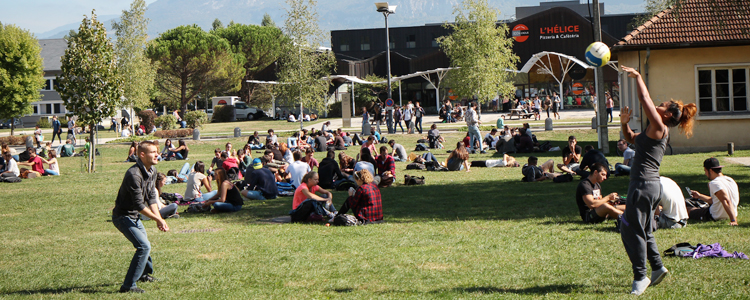Jean-Baptiste Marcoz, politician and mathematics professor, bequeathed his entire fortune to the city of Chambéry in 1834, founding the first vocational school and enabling the construction of the original buildings of today's university presidency in 1890. A vice-rectorate was set up in Chambéry in 1860, followed by a rectorate in 1862, which remained in place until 1920. It wasn't until 1960 that a Collège Scientifique Universitaire was created, followed in 1963 by a Collège Littéraire Universitaire. Their merger in 1969 gave rise to the Centre Universitaire de Savoie (CUS), based in Chambéry. Its first president, the jurist Roger Decottignies, left his name to the amphitheatre on rue Marcoz.
In 1973, the Institut Universitaire de Technologie d'Annecy-le-Vieux (IUT d'Annecy) opened its doors, paving the way for fruitful bi-departmental development. Finally, with the decree of June 27 1979, the CUS officially became the Université de Chambéry, with the name "Université de Savoie". The Jacob-Bellecombette student center was named after its first president, biologist Jacques Rebecq.
Since then, the Savoyard establishment has continued to evolve. It is located in two departments and spread over
on four main sites:
- the Presidency and the Centre National de academics des Enseignants intervenants auprès des jeunes Déficients Sensoriels (CNFEDS), in Chambéry;
- the Annecy, Bourget-du-Lac and Jacob-Bellecombette campuses.
As part of its commitment to promoting and networking the region in which it is based, the university is also established in other towns in the region, such as Thonon-les-Bains and Annemasse, and soon in Ferney-Voltaire.
It became a founding member of the PRES "Université de Grenoble" on July 16, 2010, which was transformed into the Communauté d'universités et d'établissements "Université Grenoble Alpes" with the law of July 22, 2013. A "strengthened" member of this ComUE, the latter's disappearance has led it to discuss, within the framework of the ordinance of December 12, 2018, a territorial coordination agreement with the new Université Grenoble Alpes, which will come into being on January1, 2020.
In 2014, the Université de Savoie chose to change its identity. The following year, it became " Université Savoie Mont Blanc ", a symbol of unity within the two Savoie departments and of national and international visibility.
Located between Lyon and Grenoble, on the borders of Switzerland and Italy,Université Savoie Mont Blanc is a major player in the intellectual, cultural, social and economic development of its region. Thanks to the close and constructive links it has forged with other local, regional and national players, theUniversité Savoie Mont Blanc is today a key partner in the university academic dynamic of a French-speaking area that transcends borders, as demonstrated by its European university project.
At the start of the 2018 academic year, it has almost 15,000 students, to whom it offers around 200 degree courses at all levels of L-M-D. Its courses are supported by 19 renowned research laboratories.
High-level research, high-quality multidisciplinary training that ensures proven professionalization, personalized supervision and international openness are all assets to ensure the personal success and successful integration of students in today's and tomorrow's knowledge-based society.
